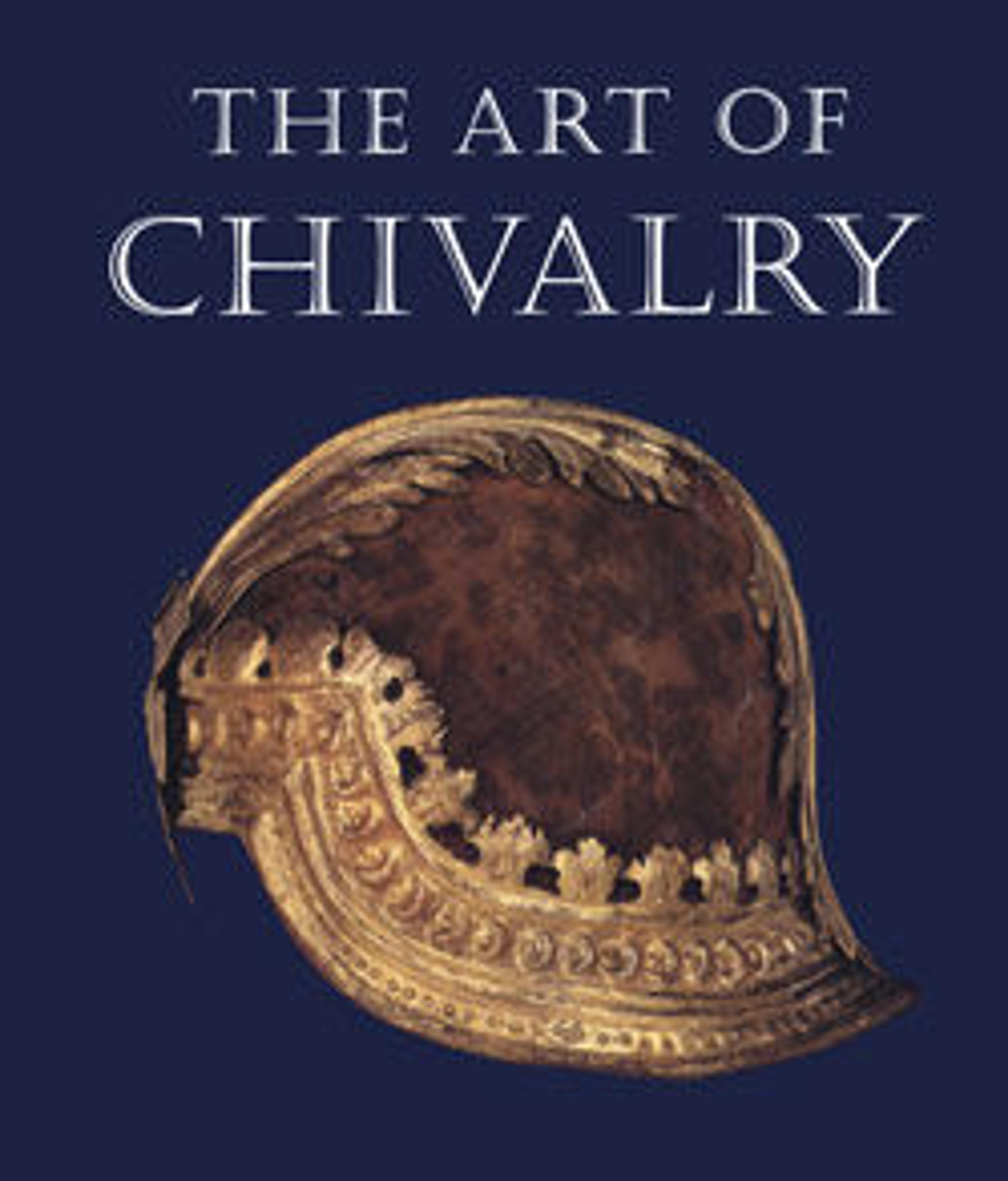Snaphaunce Revolving Gun
The barrel is octagonal, engraved with foliation on the breech, and is mounted with a blade front sight of brass and a rear sight of steel, attached with a long tang chiseled with floral scrolls. The cylinder is of brass with eight chambers, each provided with a pan and manually operated sliding pan cover retained in position by a spring. The cylinder was also turned by hand, and was locked in firing position by a spring catch released by a lever in front of the trigger guard. The chambers were loaded in turn from the front where the stock has a special recess. The chambers and pan covers are numbered 1 to 8.
The combination frizzen-pan cover and its spring are mounted in front of the cylinder, separate from the rest of the lock mechanism. All parts of the lock and the side plate are chiseled and engraved with floral motifs, including tulips.
The ebonized wooden stock is painted on the butt and the cheekpiece with birds amid foliation, in gold, red, and green, now badly rubbed, and the butt-plate tang is engraved number 171, probably an inventory number. Decoration imitating Chinese and Japanese lacquerwork was popular on Dutch furniture, inspired by objects brought back from Asia by the ships of the Dutch East India Company. The design of the engraved and chiseled floral decoration shown here was widely applied in the seventeeth century to Dutch firearms, as well as to Russian guns and pistols made under the strong influence of Dutch gunmakers and decorators.
In early firearms the slow rate of fire was one of the serious problems, and various multi-shot firearms were devised so that several shots could be fired in quick succession. From the late sixteenth century, revolving firearms came into use. They had a cylinder containing a number of chambers for loads that could be fired as quickly as the lock could be cocked and the cylinder rotated in position. This system was fairly widely employed in civilian firearms but was too expensive for ordinary military use. The revolving system was greatly improved in the 1830s by the American inventor Samuel Colt, who devised a mechanism to turn and lock the cylinder by cocking the hammer.
The combination frizzen-pan cover and its spring are mounted in front of the cylinder, separate from the rest of the lock mechanism. All parts of the lock and the side plate are chiseled and engraved with floral motifs, including tulips.
The ebonized wooden stock is painted on the butt and the cheekpiece with birds amid foliation, in gold, red, and green, now badly rubbed, and the butt-plate tang is engraved number 171, probably an inventory number. Decoration imitating Chinese and Japanese lacquerwork was popular on Dutch furniture, inspired by objects brought back from Asia by the ships of the Dutch East India Company. The design of the engraved and chiseled floral decoration shown here was widely applied in the seventeeth century to Dutch firearms, as well as to Russian guns and pistols made under the strong influence of Dutch gunmakers and decorators.
In early firearms the slow rate of fire was one of the serious problems, and various multi-shot firearms were devised so that several shots could be fired in quick succession. From the late sixteenth century, revolving firearms came into use. They had a cylinder containing a number of chambers for loads that could be fired as quickly as the lock could be cocked and the cylinder rotated in position. This system was fairly widely employed in civilian firearms but was too expensive for ordinary military use. The revolving system was greatly improved in the 1830s by the American inventor Samuel Colt, who devised a mechanism to turn and lock the cylinder by cocking the hammer.
Artwork Details
- Title: Snaphaunce Revolving Gun
- Date: ca. 1660–70
- Culture: German
- Medium: Steel, wood, brass, horn, bone, paint, lacquer
- Dimensions: L. 52 1/4 in. (132.7 cm); L. of barrel 34 7/16 in. (87.5 cm); Cal. .51 in. (13 mm); Wt. 9 lb. 4 oz. (4196 g)
- Classification: Firearms-Guns
- Credit Line: Bequest of William G. Renwick, 1972
- Object Number: 1972.44
- Curatorial Department: Arms and Armor
More Artwork
Research Resources
The Met provides unparalleled resources for research and welcomes an international community of students and scholars. The Met's Open Access API is where creators and researchers can connect to the The Met collection. Open Access data and public domain images are available for unrestricted commercial and noncommercial use without permission or fee.
To request images under copyright and other restrictions, please use this Image Request form.
Feedback
We continue to research and examine historical and cultural context for objects in The Met collection. If you have comments or questions about this object record, please contact us using the form below. The Museum looks forward to receiving your comments.
